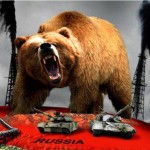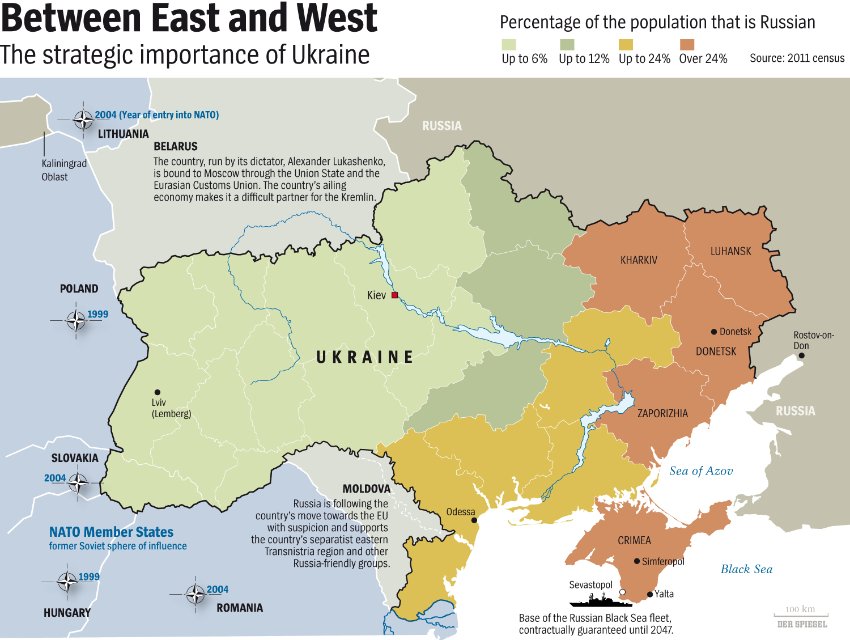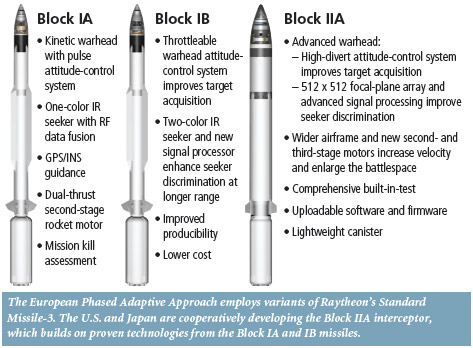Amb. Henry F. Cooper, Chairman . . . Lt. Gen. Daniel Graham, Founder
High Frontier . . Building Truly Effective Defenses . . Reagan’s Vision Lives
E-Mail Message 140318
Build Better Defenses, Now!
By Ambassador Henry F. Cooper
March 18, 2014
The Russian Bear on the prowl in Ukraine presents sobering global implications of a growing threat that could escalate even to place American equities at risk at home. We need both effective diplomatic and military responses—including an increased emphasis and funding for effective ballistic missile defenses for our friends and allies near the Bear and for Americans at home.
Recent events in Ukraine make clear that Russian President Vladimir Putin has taken his measure of U.S. policies, especially as articulated—and even more as practiced—by President Barak Obama and his successive Secretaries of State, and found them wanting. Their naïve “reset,” policies of appeasement and repeated “red lines” drawn and abandoned have left the former KGB operative now in charge of Russia thinking that he has an opportunity to reverse what, in 2005, he called the breakup of the Soviet Union: “A major geopolitical tragedy” of the 20th century. America must wake up to this reality and take effective diplomatic and military countermeasures.
Some Geopolitical Realities.
The Der Spiegel map below illustrates that Putin’s annexation of Crimea would assure future Russia’s access to its only warm water port at Sevastopol, no doubt one of his strategic objectives. It also is potentially only one step in his efforts to regain Ukrainian territory controlled by the former Soviet Union—no doubt, focusing first on the eastern portions of Ukraine with significant Russian population, as indicated below. Citizens of neighboring states, including those now a part of NATO, are also justifiably concerned about the looming Russian Bear.
For an interesting European (Der Spiegel) perspective in anticipation of the currently unfolding events, click here, here and here. David Sanger’s article in yesterday’s New York Times gives a mainstream foreign policy expert’s view of past failures of the Obama administration’s “leading from behind” foreign policy initiatives and the associated stakes in unfolding events in Crimea and other trouble spots around the world.
Actually, these analyses and recent events are consistent with what Putin told Defense Secretary Robert Gates in 2007—that he seeks to “restore Russian pride,” after the humiliating collapse of the Soviet Union. His subsequent actions toward achieving that goal include efforts to restore Russia’s hegemony over neighboring states and the many millions who gained their freedom shortly after the fall of the Berlin Wall.
In doing so, he is not averse to using military force, as illustrated by his invasion of Georgia in 2008 and now in Ukraine, though he may prefer to use accompanying threats and intimidation as illustrated by his treatment of most East European states, especially those now members of NATO.
And he will also use other diplomatic levers as illustrated by Russia’s veto of the United Nation Security Council’s resolution declaring the invalidity of Sunday’s referendum in the autonomous republic of Crimea. Notably, China abstained instead of voting with its ally as usual—or with the majority.
So . . . what’s next? How will Russia next employ its military already deployed in Ukraine? What will the outgunned Ukrainians do? And how will the U.S. and its allies respond?
Escalating Tensions, Tit-for-Tat Diplomacy and Dangerous Outcomes.
After the majority of Crimea’s residents voted to secede from Ukraine, Crimea’s parliament voted on Monday to break away from Ukraine and join the Russian Federation, putting the onus on Russia to decide whether, and when, to absorb the territory that has been occupied by Russian forces since late last month.
Russian legislators quickly suggested it is only a matter of time, and are considering a how to create a legal framework to annex Crimea, perhaps next week.
Meanwhile, the U.S. and European allies refused to recognize the results of the Crimean votes, calling the vote illegal. All 28 members of the European Union (EU) issued statements decrying the referendum over the weekend.
Then in the wake of U.S. and EU threats of sanctions and other measures, a Kremlin-backed journalist issued a stark warning about Moscow’s nuclear capabilities. Dmitry Kiselyov, the Putin-appointed head of a new state news agency tasked to portray Russia in the best possible light, warned on his weekly current affairs television show that “Russia is the only country in the world that is realistically capable of turning the United States into radioactive ash.”
This is certainly a true statement, but would Putin actually risk the U.S. retaliation which would return the favor—as was the status quo of the Cold War? Putin may be rude and offensive, but he is not stupid.
Furthermore, it is interesting that in the midst of these verbal provocations, a Russian inspection team was to arrive yesterday in San Francisco to inspect U.S. strategic forces according to the existing New START Treaty. Bill Gertz’s article notes that administration officials were pleased that these inspections would continue in the light of the ongoing Crimea-Ukraine confrontation. Really?
Seems to me that we should reexamine the merits of New START—which favors Russian interests by permitting them to increase their strategic nuclear forces while we reduce ours—and its inspection regime—which is weaker than was the case under the previous START Treaty it replaced. Why not include withdrawal from New START among the U.S. initiatives we might take if Russia persists in its illegal annexation of Crimea and threats of a further annexation of more or all of Ukraine?
And we should increase the funding to modernize and sustain our strategic forces, rather than allowing them to continue to atrophy while Russia and China modernize theirs.
In any case, amid the escalating tensions yesterday in what U.S. officials called “by far the most comprehensive sanctions applied to Russia since the end of the Cold War,” President Obama named seven Russian officials whose assets will be frozen and “may not be transferred, paid, exported, withdrawn or otherwise dealt.” Four others, including former Ukrainian President Viktor Yanukovych, also have been targeted.
Concurrently, President Obama said there still was time for Russia to pull back and resolve the situation in Ukraine diplomatically, but the U.S. and its partners are prepared to go even further if the crisis worsens. “We are imposing sanctions on specific individuals responsible for undermining the sovereignty, territorial integrity and government of Ukraine. We’re making it clear there are consequences for their actions,” he said.
The administration said these actions are in consultation with the European Union, which is expected to announce its own round of sanctions today. Such sanctions from Europe may be biting for Russia, but could also destabilize Europe’s newly recovered economies. And other responses may also be in the cards. Promises, promises . . .
We should keep in mind a major danger in this diplomatic “tit for tat”—the prospect of escalation that gets out of control. At some point, some Ukrainians will likely fight and may be joined by others who are threatened—including some of our NATO allies. Then if Putin escalates and NATO guarantees are invoked . . . we could quickly be on our way to scenarios of the Cold War.
Putin surely understands this and no doubt thinks we are fearful of significant escalation. After all, Obama’s foreign policy, including the above mentioned sanctions that have largely been perceived, including by outspoken Russians, as being rather feeble, gives little assurance that he is wrong.
Miscalculation is how a major war could begin—on the centennial of the start of World War I in the same general region for much the same reason, imperial ambition exploitation of ethnic strife.
Keep that in mind, as you contemplate Putin’s formal recognition of Crimea late on Monday—only hours after the Obama administration slapped sanctions on 7 Russians and 4 Ukrainians, saying it was targeting “cronies” and senior advisers of Putin, the Russian arms industry and those responsible for an overall policy of military and political moves to take over Ukraine’s Crimea region and destabilize other portions of Ukraine. Click here for more details.
Clearly Putin was not impressed with Obama’s move—and other Russian officials have poked fun at it. So I wonder what will be the next move . . . and by whom.
Sure wish our policy had been visibly one that championed “Peace through Strength” rather than appeasement and “leading from behind.”
Stay tuned.
Strengthen our Missile Defenses.
Not least among related issues of contention in Russia’s near-abroad are Putin’s past and expected future attempts to intimidate former Warsaw Pact members Poland, the Czech Republic, and Romania—seeking to block their role in defending NATO against Iranian ballistic missiles by falsely claiming that these defenses threaten Russia’s strategic deterrent. He will likely try to exploit President Obama’s promise of “flexibility” on missile defenses after his re-election last November.
On the other hand, Republicans such as John McCain of Arizona, a senior member of both the Senate Armed Services and Foreign Relations committees, recently noted that as part of the administration’s “reset” of relations with Russia, Obama initially scrapped President George W. Bush’s plan to station there ballistic missile defense (BMD) systems, after Putin argued that he viewed the ground-based interceptors as a threat to Russia’s nuclear deterrent. And he argued that the Bush plan should be reinstated.
Senator McCain’s assessment is partially correct, but ignores what has happened since 2009. While impolitely dropping the Bush plan, the Obama administration chose instead to deploy earlier in Europe less expensive defenses by adapting the very successfully tested and operational sea-based Aegis BMD system for deployment on land.
The Navy’s Standard Missile interceptor system has under its belt 28 successful intercepts out of 34 attempts, all conducted by operational crews. In 2008, one of these was against a satellite in low earth orbit moving faster than an intercontinental ballistic missile (ICBM), demonstrating an inherent capability to shoot down ICBMs.
Unless the current plans are disrupted, Aegis Ashore sites, illustrated below, will be operational in Romania in 2015 and in Poland in 2018. One site is already operational in Hawaii for operational testing before taking the system to Europe. The main components of the Aegis Ashore are the command and control system, radar and vertical launch system (VLS) as carried on our Aegis Destroyers and Cruisers. The entire system can fit on a football field sized area.
 The Standard Missile interceptor (the SM-3 Block IB) to be deployed in Romania next year has completed development and is in production (and being deployed on Aegis BMD ships at sea). The Block IB interceptors are quite capable of defending NATO, and with the right radar support can defend the U.S. from Iranian ICBMs. An improved version of the Standard Missile (the SM-3 Block IIA) is being tested for deployment at sea and in Poland in a joint program with the Japanese. The Block IA, illustrated below, is also operational on a number of the 30-plus Aegis BMD ships at sea today. All three interceptors fit into the vertical launch system (VLS) already deployed on our Aegis BMD ships. Aegis Ashore will employ a land-based version, as indicated at the far right in the above figure.
The Standard Missile interceptor (the SM-3 Block IB) to be deployed in Romania next year has completed development and is in production (and being deployed on Aegis BMD ships at sea). The Block IB interceptors are quite capable of defending NATO, and with the right radar support can defend the U.S. from Iranian ICBMs. An improved version of the Standard Missile (the SM-3 Block IIA) is being tested for deployment at sea and in Poland in a joint program with the Japanese. The Block IA, illustrated below, is also operational on a number of the 30-plus Aegis BMD ships at sea today. All three interceptors fit into the vertical launch system (VLS) already deployed on our Aegis BMD ships. Aegis Ashore will employ a land-based version, as indicated at the far right in the above figure.
The Bush administration planned to develop a brand new larger Ground Based Interceptor (GBI) as a follow-on to those deployed in Alaska and California and for deployment in Poland—that is what the Obama administration canceled.
It could be revived and deployed in Europe, but I would argue that it would be mistake to delay the on-going, on track SM-3 development, deployment and operations program for several reasons:
- It would take longer than completing the current plans for the Block IB and IIA for little gain in capability, especially for the defense of Europe and given the added protection that the in-theater Aegis BMD ships can provide against Iranian missiles—additional funds might accelerate the current plan.
- In any case, the U.S. Navy and Japanese will seek the advantages of the Block IIA to improve their existing sea-based systems. And development of a lighter kill vehicle for the Block IIA would further increase its defense footprint, perhaps to be equivalent to the potential defense coverage of the Block IIB design proposed by the Obama administration or the Bush administration proposed GBI. (It should be noted that Block IB has intercepted a more challenging target ballistic missile than has the currently deployed GBI.)
- Either the GBI or the Obama administration’s Block IIB would be a larger interceptor than would fit in the existing VLS—so it could not improve the sea-based capability without significant additional modification of the sea-based defense system infrastructure, which would add cost and take longer than planned with the nearly fully developed Block IIA.
It makes sense for the Pentagon to include advanced GBI and Block IIB designs among the options being considered, at congressional direction, for deploying an East Coast missile defense site to defend against Iranian ICBMs. It may even make sense also to deploy that future system in Europe. But I would argue that we should make sure that the sea-based SM-3 interceptors are “all they can be” for deployment as soon as possible in both sea-based and ground-based configurations, whatever may be done on the development of a new GBI.
Homeland Defense Implications.
Another important reason that I believe this approach would be wise is because the same Aegis Ashore system being deployed in Europe can quickly and affordably be deployed on military bases around the Gulf of Mexico to end our total vulnerability against ballistic missiles launched from vessels in the Gulf or from Latin America. In this case, the threat from Iran, which partners with Russia (among others in the “cacophony of proliferation”), is a major concern.
Aegis Ashore sites along the east coast may also make sense and would supplement the inherent capability of Aegis BMD ships that are normally along the eastern seaboard or in port, where their crews can, with appropriate training, provide homeland defense capability. Hopefully, these considerations will be folded into the Pentagon’s study of how best to improve our homeland defense capability.
Finally, I advocate a Navy research and development program to provide a much lighter kill vehicle for the Block IIA, which would substantially increase its burnout velocity and associated defended area (which increases as the square of the velocity). It also would give the Aegis Ashore sites added high altitude capability against a Fractional Orbital Bombardment System (FOBS), which is a fancy name associated with a 1960s Soviet system but which is simply a nuclear weapon carried by a satellite over the South Pole to attack the U.S. through our “back door”—all our current defenses are directed against ICBMs that come at us from over the North Pole.
Both North Korea (which has nukes) and Iran (which may soon have nukes—if they already don’t) have tested satellites launched southward over the South Pole, so this is not a hypothetical threat. And if either were to detonate a single nuclear weapon a few hundred miles over the central United States, the resulting electromagnetic pulse (EMP) would shut down for an indefinite period the currently unhardened electric power grid, leading within a year to the death of several hundred million Americans.
We need effective defenses against this threat—and we need to harden the electric power grid against EMP. Programs to accomplish both should be given high national security priority, and appropriately funded to end this vulnerability as quickly as possible.
These programs should be included in our earliest response to Putin’s current efforts intimidate, threaten and attack Russia’s neighbors and U.S. interests, all to extend Russia’s hegemonic aspirations.
Closure.
Former Undersecretary of State for Political Affairs Nicholas R. Burns calls the Crimean-Ukrainian crisis President Obama’s “most important, most difficult foreign-policy test,” noting that there is “no one in Europe who can approach him in power. He’s going to have to lead.”
While dealing with the current crisis in Crimea-Ukraine, Russia can be expected to seek to strengthen its geopolitical equities, including its ties with China, another peer competitor on the world’s strategic stage. Meanwhile, Senator John McCain bitterly notes that “nobody believes in America’s strength anymore.”
We need to change this picture—and soon. And the President’s most recent move was not helpful.
Leading from behind simply won’t do. Whatever else we do in responding to the current situation, we had better build better defenses, now!
Recommendations.
The Obama administration should adopt a strategy of leading from strength backed up with major funded initiatives that back up that policy. Stop the arms control by executive agreements, especially with Russia and instead seriously consider withdrawing from the New START Treaty.
Congress should add significant funding to strengthen our national defenses—including against ballistic missiles that could be used in a devastating EMP attack.
Needed initiatives include additional funding for the Navy’s Aegis Ballistic Missile Defense program to:
- Deploy a TYP-2 radar in northern New England to enable the 4-6 Aegis BMD ships normally along the East Coast or in port to shoot down Iranian ICBMs coming over the North Polar region.
- Begin looking for specific Aegis Ashore sites around the Gulf of Mexico to counter ballistic missiles launched from vessels in the Gulf or Latin America. Also consider Aegis Ashore sites along the eastern seaboard to fill in any gaps in the coverage provided by the Aegis ships.
- Develop a light weight kill vehicle for the Standard Missile (both the Block IB and IIA) to enable the highest burnout velocity possible so that it can reach higher altitude to shoot down satellites that might threaten an EMP attack from over the South Pole and in any case to defend a larger area.
- Initiate studies to build space- based interceptors to provide a high confidence defense against all ballistic missile attacks, including EMP attacks from high altitude satellites.
We need to press our efforts to inform state and local authorities about the EMP threat and expand our work with the National Guard to help them gain knowledge and workable plans to help harden the grid and counter the EMP threat. This work should go hand in hand with the efforts to gain support from State legislators to expand on the excellent work in Maine and Virginia, which have passed legislation requiring serious studies of the EMP threat and the needed countermeasures to protect the electric power grid.
The most recent bill passed in record time without a negative vote in Virginia can be used as a ready pattern.
Near Term High Frontier Plans.
We will continue working with South Carolina folks to build a coalition to engage constructively with private citizens and their local and state representatives and other authorities to work with the SC National Guard in understanding and responding to this serious threat. We will expand this effort to neighboring and other states.
We are informing SC state legislators and senators about the threat and what can be done to deal with it—and hopefully they will follow Maine and Virginia in seeking to harden the electric power grid. We also expect support from Cong. Jeff Duncan (R-SC) whose district includes my SC farm—who is a member of the Congressional EMP Caucus seeking passage of the Shield Act and the Infrastructure Protection Act, as well as other SC representatives.
We will be working with members of the EMP Coalition and others who are seeking to take our message across the country—especially with Bob Newman, a former Adjutant General of Virginia to help us link our SC plans more broadly and especially into the National Capital region. We traveled to North Carolina last week and are traveling to Florida this week, spreading the word and seeking support.
What can you do?
Join us in praying for our nation, and for a rebirth of the freedom sought, achieved and passed to us by those who came before us.
Get involved— in particular, let your electric power company know of your concern and urge them to harden the electric power grid.
Help us to spread our message to the grass roots and to encourage all “powers that be” to provide for the common defense as they are sworn to do.
Begin by passing this message to your friends and suggest they visit our webpage, www.highfrontier.org for more information. Also, please encourage your sphere of influence to sign up for our weekly e-newsletter!
And support us with your tax deductible gifts to help enable our continuing efforts.
Please click here to read Past Weekly Updates!
Please click here to read past Flash Messages!
Please help High Frontier continue this important and timely work!
Be sure to follow us on our Social Sites!
If you found this letter via our Social Sites, and you would like to subscribe, please click below!








